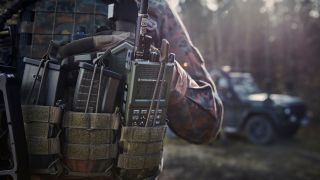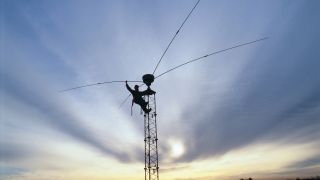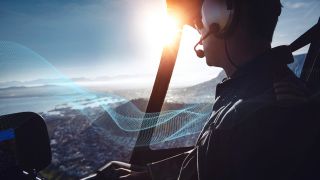Tactical communications
Digitalization of land forces
Digitalization improves operational readiness and efficiency. Networking military units with battle management systems (BMS) enables precise command and control (C2) of military operations. Software defined radios (SDR) empower and enable land forces to utilize C2 capabilities for information superiority and situational awareness, which are crucial for mission success.
Challenges of digitalization for secure communications
Joint tactical forces must have C2 solutions for a broad range of missions, making reliable communications vital to any operation. Connected and interoperable joint communications architecture is essential to intelligence collection, multi-platform operations as well as achieving and maintaining information superiority.
In view of these challenges and risks arising from digitalization, the ongoing digitalization process in land forces worldwide has also triggered an evolution in tactical communications, particularly in the adoption of SDRs. This evolution has given rise to additional requirements, such as:
- Development and introduction of sophisticated technologies and new ways of thinking/acting for land forces at every level in joint and combined missions
- Reliable, seamless and secure C2 communications architectures from HQ down to the individual soldier on the ground
- Trusted partnership to support integration into existing networks and architectures
- A robust and reliable supply chain to cope with the challenges of globalization and international
Interoperability for mission success
Interoperability is crucial to ensuring armed forces can communicate and share data during missions, not only amongst each other, but also with other services and in joint operations. Interoperability is fundamental to mission success and is what makes multinational operations possible. Rohde & Schwarz ensures interoperability so that allies and partners can work together to achieve common objectives. The company makes this possible with SDRs and using standardized NATO waveforms such as ESSOR.
For Rohde & Schwarz, independence is a valuable asset and an essential part of our corporate identity. For 90 years, the privately owned German company has maintained technological leadership in all its fields of work.
The Rohde & Schwarz solutions – enabling the digitalization of land forces
Digitalization of land operations not only requires the land forces themselves evolve but also demands that their industry partners and technologies evolve along with them. Rohde & Schwarz is at the forefront of this evolution as an innovator and partner for digital, fully integrated and modular tactical communications solutions. The Rohde & Schwarz SOVERON solutions for armed forces worldwide meet the need for secure and robust communications at every level of tactical radio communication in the VHF/UHF and strategic HF domains.












